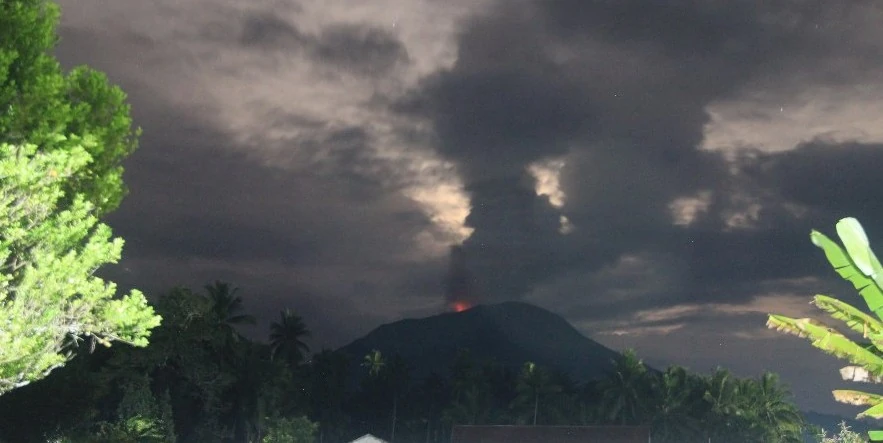Strong eruptive activity at Ibu volcano, Indonesia

Eruptive activity at Indonesia’s Ibu volcano continues with strong explosions from the cinder cone within the summit caldera.
The PVMBG recorded two significant eruptions on January 31, 2024. The first occurred at 12:45 UTC, producing an ash column that reached up to 4.5 km (14 800 feet) above sea level, drifting northeast with a gray, thick intensity. This event was captured on a seismograph, showing a maximum amplitude of 22 mm and lasting 143 seconds.
A subsequent eruption at 16:32 UTC generated an ash column up to 3.3 km (10 800 feet) above sea level, characterized by a white to gray color and thick intensity towards the southeast, with a seismograph recording a maximum amplitude of 28 mm and a duration of 186 seconds.
Throughout January 17 – 23, Ibu maintained a state of eruption, with daily ash emissions ranging in color from white-and-gray to gray-to-brown, rising 200 – 1 300 m (656 – 4 265 feet) above the summit and dispersing southwards, southwest, and west. On January 17, observers at the post reported hearing banging and rumbling sounds, and windows in the building vibrated. Minor ashfall affected areas to the northwest, west, and southwest of the volcano between January 17 and 19.
The Alert Level remains at 2 (the second-highest on a four-tier scale), advising the public to stay beyond a 2 km (1.2 miles) radius and 3.5 km (2.2 miles) from the northern sector of the active crater. In case of ashfall, outdoor individuals are recommended to use protective gear for their nose, mouth (masks), and eyes (goggles).
Gunung Ibu’s truncated summit on Halmahera Island’s northwest coast features large nested craters, with the inner crater being 1 km (0.6 miles) wide and 400 m (1 300 feet) deep, housing several small crater lakes.
The outer crater, 1.2 km (0.7 miles) wide, is breached to the north, forming a steep-walled valley. A significant cone has developed to the ENE of the summit, while a smaller one on the WSW has produced a lava flow down the west flank.
Additionally, a group of maars exists below the north and west flanks. The volcano’s recorded eruptive history began with a small summit explosion in 1911, with renewed activity since December 1998 leading to the formation of a lava dome covering much of the inner summit crater’s floor, alongside continuous explosive ash emissions.
References:
1 Activity update for Ibu volcano – PVMBG – January 31, 2024
2 Global Volcanism Program, 2024. Report on Ibu (Indonesia) (Sennert, S, ed.). Weekly Volcanic Activity Report, 17 January-23 January 2024. Smithsonian Institution and US Geological Survey.
3 Ibu – Geological summary – GVP
Featured image credit: PVMBG

Commenting rules and guidelines
We value the thoughts and opinions of our readers and welcome healthy discussions on our website. In order to maintain a respectful and positive community, we ask that all commenters follow these rules.